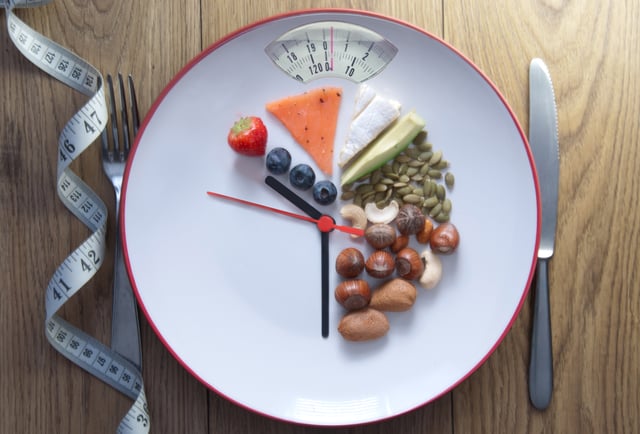Every new year brings new resolutions, often along the lines of “eat better,” “exercise more” or “lose 10 pounds.” Such good intentions often lead consumers who are restricting their diets to make incorrect assumptions about what they should and shouldn’t eat. And that can make things challenging for foodservice operators—particularly those with cheese-forward menus.
 The good news is that there are many benefits of cheese that play into the dietary and lifestyle needs of today’s consumers. Plant-based diets are growing, with many consumers embracing a “less but better” philosophy that means scaling back (but not eliminating) their meat and dairy consumption.
The good news is that there are many benefits of cheese that play into the dietary and lifestyle needs of today’s consumers. Plant-based diets are growing, with many consumers embracing a “less but better” philosophy that means scaling back (but not eliminating) their meat and dairy consumption.
With its high protein content, cheese also helps address the nutrition gap that can come with the low-meat or no-meat diets consumers increasingly are embracing. Dairy products are part of many popular diets, including keto—an attribute you can call out in your menu or promotional materials to draw in dieters. With restaurants like Chipotle and Mooyah offering “lifestyle bowls” and “lifestyle burgers,” respectively, as well as other menu items that specifically cater to diets like keto, gluten-free, vegetarian and high-protein, operators are recognizing the importance of marketing to health “tribes” rather than making blanket better-for-you claims.
What’s more, consumers are increasingly interested in the functional benefits of food, or “food as medicine”—a growing trend, especially among younger consumers, according to The NPD Group. And with the International Food Information Council Foundation reporting that one in four consumers actively seeks health benefits from food, such as weight loss, energy, digestive health and heart health, there’s ample room to tap into the natural benefits of cheese to appeal to these customers.
Here are four cheeses with special health and functional benefits to think about incorporating into your 2021 menu, as well as tips about how to communicate their positive attributes to health-conscious customers.
Mozzarella
In addition to being lower in calories and sodium than many of its cheesy brethren, mozzarella contains active probiotics, including Lactobacillus casei and Lactobacillus fermentum: two strains touted for their abilities to reduce inflammation and improve gut health. They also may boost immunity—something we all could use an extra dose of in the cold winter months. What’s more, mozzarella contains high amounts of Vitamin B12, phosphorus and calcium, making it a tasty source of essential nutrients.
Make sure your customers know that mozzarella is a healthy choice that can be used in many fresh recipes—and not just melted on top of a pizza! Train your servers to talk about its inclusion in other menu items with adjectives like “light” and “fresh”; also consider grouping these items under a “low-calorie” section of your menu. These Balsamic-Glazed Caprese Skewers make a great addition as a light, veggie-forward appetizer that serves as the perfect antidote to heavy holiday meals.
Blue Cheese
With its distinctive, veined appearance and sharp, complex taste, you can’t miss blue cheese on a plate or in a dish. And you wouldn’t want to: Blue cheese contains more calcium (an essential mineral for healthy bones and teeth) than most other cheeses. A British study has even shown that it may have unique anti-inflammatory properties—an explanation for the so-called “French paradox” (that is, the low rate of cardiovascular mortality in France despite high-fat diets).
Blue cheese comes in many varieties and flavor profiles, from mild to pungent, and can be used in moderate amounts while still contributing unmistakable flavor and texture—a strong sell for calorie-conscious diners. Call out these benefits on your menu or even in social media posts highlighting flavorful but low-calorie menu items. And consider adding a Blue Cheese Bruschetta, topped with caramelized onions and roasted asparagus, to your menu to give these guests a shareable appetizer they can feel good about eating.
Feta
Feta ranks lower on the calorie spectrum, delivering major flavor with its briny edge. It also contains higher levels of calcium and B vitamins than many other cheeses, making it as nutritious as it is delicious. And with Levantine cuisine—that which originates in eastern Mediterranean countries—growing in popularity, feta aligns with trending consumer cravings. Consider mentioning these health benefits on your menu or in your social media content to encourage customers to order your feta-filled treats without a side of guilt.
Remember that feta can contain a higher salt content than other cheeses, so skip salting the dish when you add feta to your salads, omelettes, dips and more. This colorful Feta and Watermelon Frisée Salad with sparkling honey-Dijon-sherry vinaigrette, for example, is as easy on the eyes as it is on the diet.
Goat Cheese
Goat cheese is also low in calories, with the added benefit of containing more than five grams of protein per ounce, helping you stay fuller, longer. Goat cheeses are rich in healthy fats and essential minerals like calcium, magnesium and potassium, while being free of the lactose found in cow's milk cheeses—a boon to customers who are lactose-sensitive.
Goat cheese’s creamy texture makes it particularly versatile: add to salads, spread on sandwiches, and incorporate into baked veggie and meat dishes. This Crispy Cauliflower and Goat Cheese Salad is delightfully flavorful, with a blissful combination of textures—and a perfect starter or light entrée for health-conscious guests.
Cheese, Please
The moral of the story? Many cheeses contain functional benefits that aren’t at odds with New Year’s resolutions. Incorporate them into your menu, and both you and your customers will enjoy many happy returns.
Sign up here to stay on top of the latest cheese and foodservice industry trends with Saputo’s new monthly e-newsletter.







